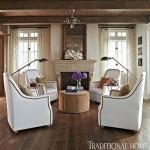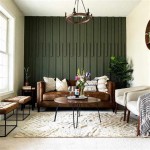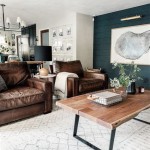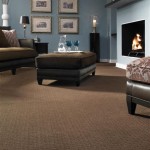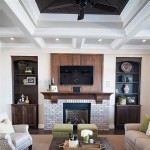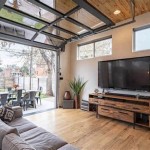Large Shelving Unit: The Cornerstone of a Functional and Stylish Living Room
The living room, often the heart of a home, serves as a multifaceted space for relaxation, entertainment, and social gatherings. Effective organization and aesthetically pleasing storage are paramount to maintaining a comfortable and welcoming atmosphere. A large shelving unit emerges as a practical and versatile solution, offering ample space for showcasing personal belongings, storing necessities, and adding character to the room's overall design.
The selection and integration of a large shelving unit require careful consideration of various factors, including spatial constraints, desired aesthetic, storage needs, and budget. This article will delve into the key aspects of incorporating a large shelving unit into a living room, offering guidance on how to maximize its functionality and visual appeal.
Understanding the Advantages of Large Shelving Units
Large shelving units offer a multitude of benefits that contribute to a well-organized and visually appealing living room. These advantages extend beyond mere storage, impacting the room's overall ambiance and functionality. Key considerations encompass the following:
Maximizing Storage Capacity: The primary advantage of a large shelving unit lies in its ability to provide extensive storage space. Unlike smaller shelves or cabinets, a large unit can accommodate a substantial collection of books, decorative objects, media equipment, and other household items. This abundance of storage helps to reduce clutter and maintain a tidy living environment.
Creating a Focal Point: A well-chosen shelving unit can serve as a striking focal point in the living room. Its size and design draw the eye, adding visual interest and establishing a sense of order within the space. The items displayed on the shelves further contribute to the unit's aesthetic appeal, reflecting the homeowner's personal style and interests.
Defining Zones Within the Room: In open-plan living spaces, a large shelving unit can effectively delineate different areas, such as a reading nook, entertainment zone, or home office. The unit acts as a visual barrier, creating a sense of separation and defining the purpose of each zone. This zoning effect can enhance the functionality and flow of the overall space.
Enhancing Vertical Space Utilization: Large shelving units are particularly beneficial in maximizing vertical space, especially in smaller living rooms. By extending storage upwards, the unit utilizes space that might otherwise be wasted, freeing up valuable floor space. This vertical emphasis can also make the room feel taller and more spacious.
Adding Architectural Interest: Some shelving units are designed with intricate details and unique architectural features, adding a touch of sophistication and character to the living room. These units can serve as a statement piece, enhancing the room's overall design and creating a more visually engaging environment.
Selecting the Right Shelving Unit: Key Considerations
Choosing the perfect large shelving unit for a living room requires careful evaluation of several factors. A misjudged selection can lead to issues with space utilization, aesthetic harmony, and long-term functionality. Therefore, the following considerations are crucial:
Assessing Spatial Constraints: Before purchasing a shelving unit, meticulously measure the available space in the living room. Consider the unit's dimensions, including height, width, and depth, and ensure that it fits comfortably without obstructing walkways or overcrowding the room. Pay attention to the placement of windows, doors, and electrical outlets, ensuring that the unit does not impede access or functionality.
Determining Storage Needs: Evaluate the specific storage requirements of the living room. Consider the types and quantities of items that need to be stored, such as books, media equipment, decorative objects, and games. Choose a shelving unit with an appropriate number of shelves and compartments to accommodate these items effectively. Consider adjustable shelves to allow for flexibility in storing items of varying sizes.
Matching the Aesthetic Style: Select a shelving unit that complements the existing aesthetic style of the living room. Consider the room's color palette, furniture styles, and overall design theme. Choose a unit that harmonizes with these elements, enhancing the room's visual appeal. Options range from modern and minimalist designs to traditional and ornate styles, ensuring a suitable match for any décor.
Considering Material Choices: Shelving units are available in a variety of materials, each offering different aesthetic qualities and levels of durability. Wood is a popular choice for its warmth and natural beauty, while metal offers a sleek and modern look. Laminate and engineered wood are budget-friendly options that can mimic the appearance of natural wood. Consider the material's durability, maintenance requirements, and resistance to wear and tear when making a decision.
Evaluating Budgetary Constraints: Set a realistic budget for the shelving unit and explore options within that price range. Prices can vary significantly depending on the size, materials, design, and brand of the unit. Consider the long-term value of the investment, opting for a durable and well-constructed unit that will withstand years of use.
Optimizing the Layout and Display on the Shelving Unit
The arrangement and display of items on a large shelving unit are crucial for maximizing its aesthetic impact and functionality. A cluttered or disorganized display can detract from the room's overall ambiance, while a well-curated arrangement can enhance its visual appeal and create a sense of harmony. Therefore, the following principles should be considered:
Creating Visual Balance: Strive for visual balance by distributing items of varying sizes, shapes, and colors evenly across the shelves. Avoid placing all large or heavy items on one side of the unit, as this can create a sense of imbalance. Group similar items together to create cohesive displays.
Incorporating Negative Space: Leave ample negative space around the displayed items to prevent the unit from feeling cluttered. Negative space allows the eye to rest and appreciate the individual objects. Strategic placement of empty shelves or sections can enhance the overall visual appeal.
Utilizing the Rule of Thirds: Apply the rule of thirds to create visually appealing arrangements. This principle involves dividing the shelves into thirds both horizontally and vertically and placing focal points at the intersection of these lines. This technique helps to create a sense of dynamic balance and visual interest.
Mixing Textures and Materials: Incorporate a variety of textures and materials to add depth and visual interest to the display. Combine books with decorative objects, plants, and artwork to create a layered and engaging arrangement. Consider using baskets or containers to store smaller items and add a touch of texture.
Adding Personal Touches: Personalize the display by incorporating items that reflect the homeowner's interests and personality. Display family photos, travel souvenirs, and cherished objects to create a unique and meaningful arrangement. These personal touches will transform the shelving unit into a reflection of the homeowner's individual style and create a welcoming atmosphere.
Maintaining a Consistent Color Palette: Consider establishing a consistent color palette for the displayed items to create a cohesive and harmonious look. Choose a dominant color and incorporate accents in complementary colors. This technique will help to unify the display and create a sense of visual order.
Incorporating Lighting: Integrate lighting into the shelving unit to highlight the displayed items and add ambiance to the living room. Install recessed lighting, spotlights, or LED strips to illuminate the shelves and create dramatic effects. Proper lighting can enhance the visual appeal of the unit and draw attention to specific objects.
Regularly Decluttering and Rearranging: Periodically declutter the shelving unit to remove unwanted or unnecessary items. Rearrange the display to refresh its look and maintain its visual appeal. This ongoing maintenance will ensure that the shelving unit remains a functional and aesthetically pleasing addition to the living room.
By carefully considering these factors, homeowners can select the perfect large shelving unit for their living room and optimize its layout and display to create a functional, stylish, and personalized space.

Byblight Eulas 71in Tall Blue Wood 6 Shelf Bookcase With Drawer Bookshelf Large Open Display Storage For Living Room Bb Ny085xf The Home

5 Tier Tall Bookshelf Wood And Metal Vertical Display Book Shelf Bookcases Shelves Storage Rack Large Open Case

Solid Wood Bookcase Shelving Unit Boxes Etsy

Tribesigns Modern 5 Tier Bookcase 71 Inch Tall Freestanding Bookshelf With Storage Shelves Large Open Bookcases Wood Display Shelving Unit For

70 9 In Tall Black Engineered Wood 12 Shelf Etagere Bookcase With 8 Tier Display Shelving Unit For Living Room

Wall Mounted Shelving 6 Shelf Unit 72 H

Tribesigns 78 Inch Tall Bookcase Modern 7 Tier White Library Bookshelf With Storage Shelves Large Open Bookcases Wood Display Shelving Unit For Bedr

Tribesigns Way To Origin Frailey 71 In Gold White Tall 11 Tier Large Open Display Bookshelf Geometric Cubed Bookcase Modern Storage Home Office Hd Xk00191 Wzz The

Triple Wide 5 Tier Book Shelf Bookshelf Display Shelves Bookcases Metal Frame Us Ebay

Homfa Triple Wide 6 Tier Bamboo Bookshelf 5ft Bookcase With 17 Open Display Shelves Super Large Freestanding Bookshelves For Home Office

